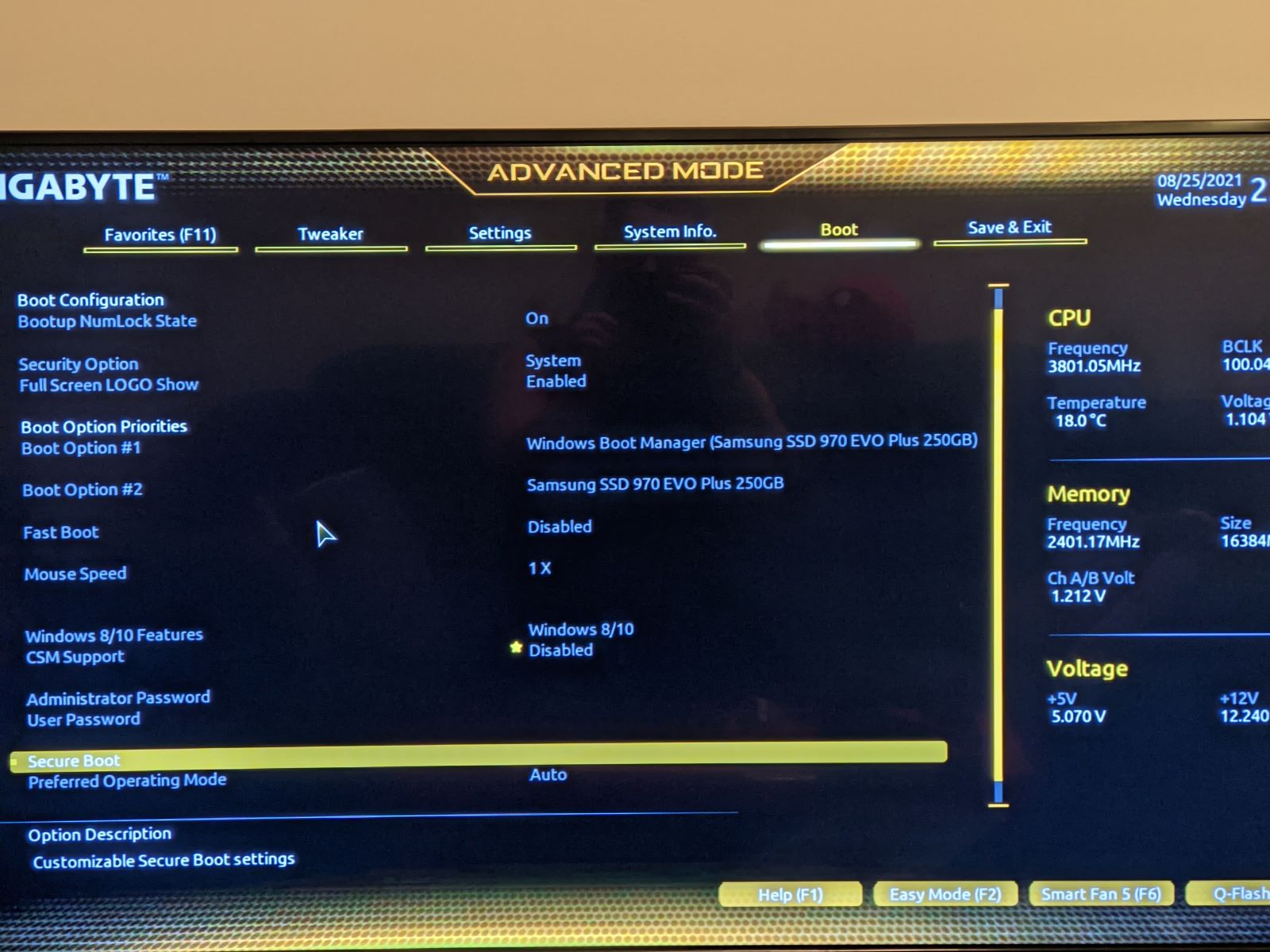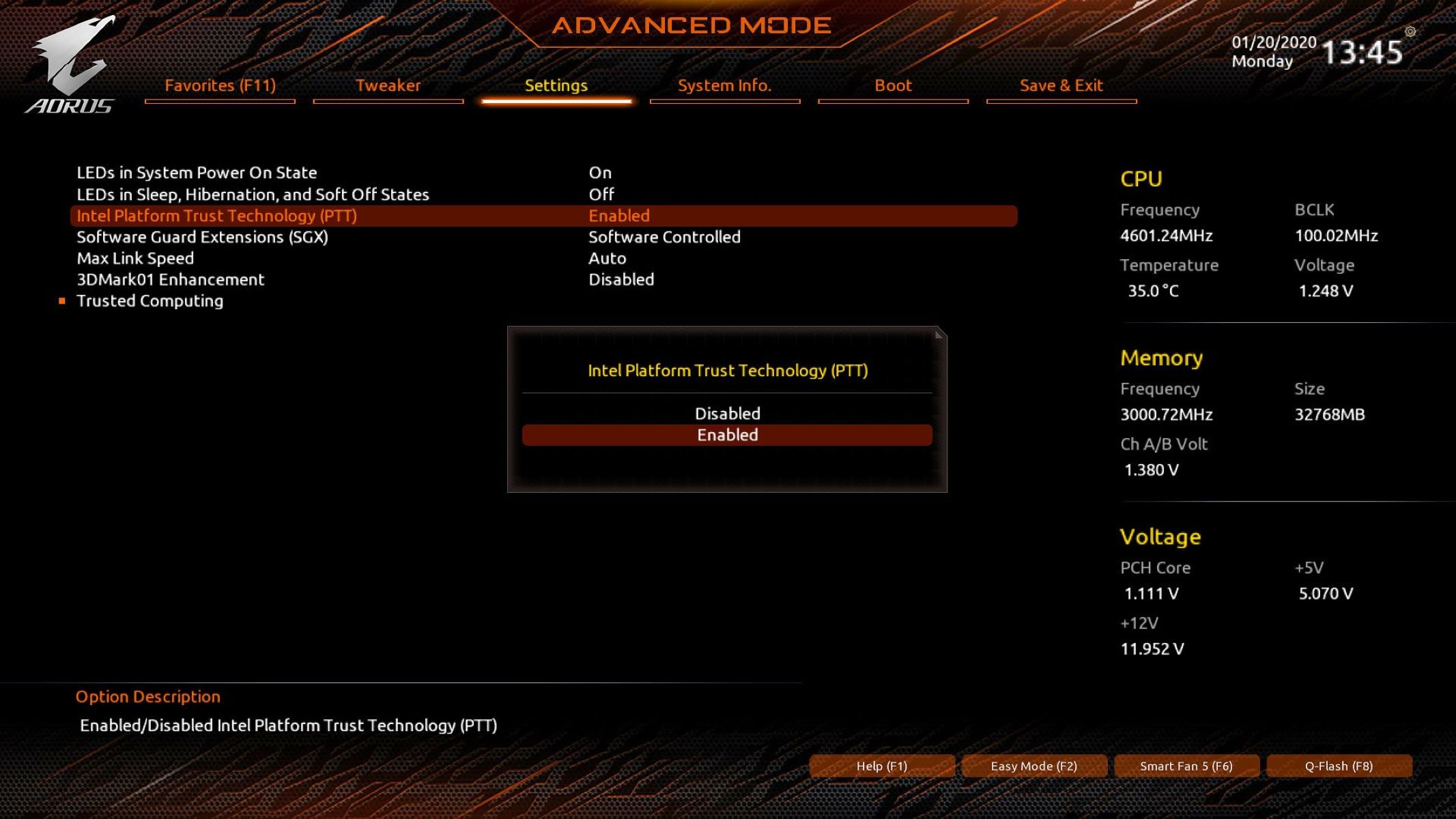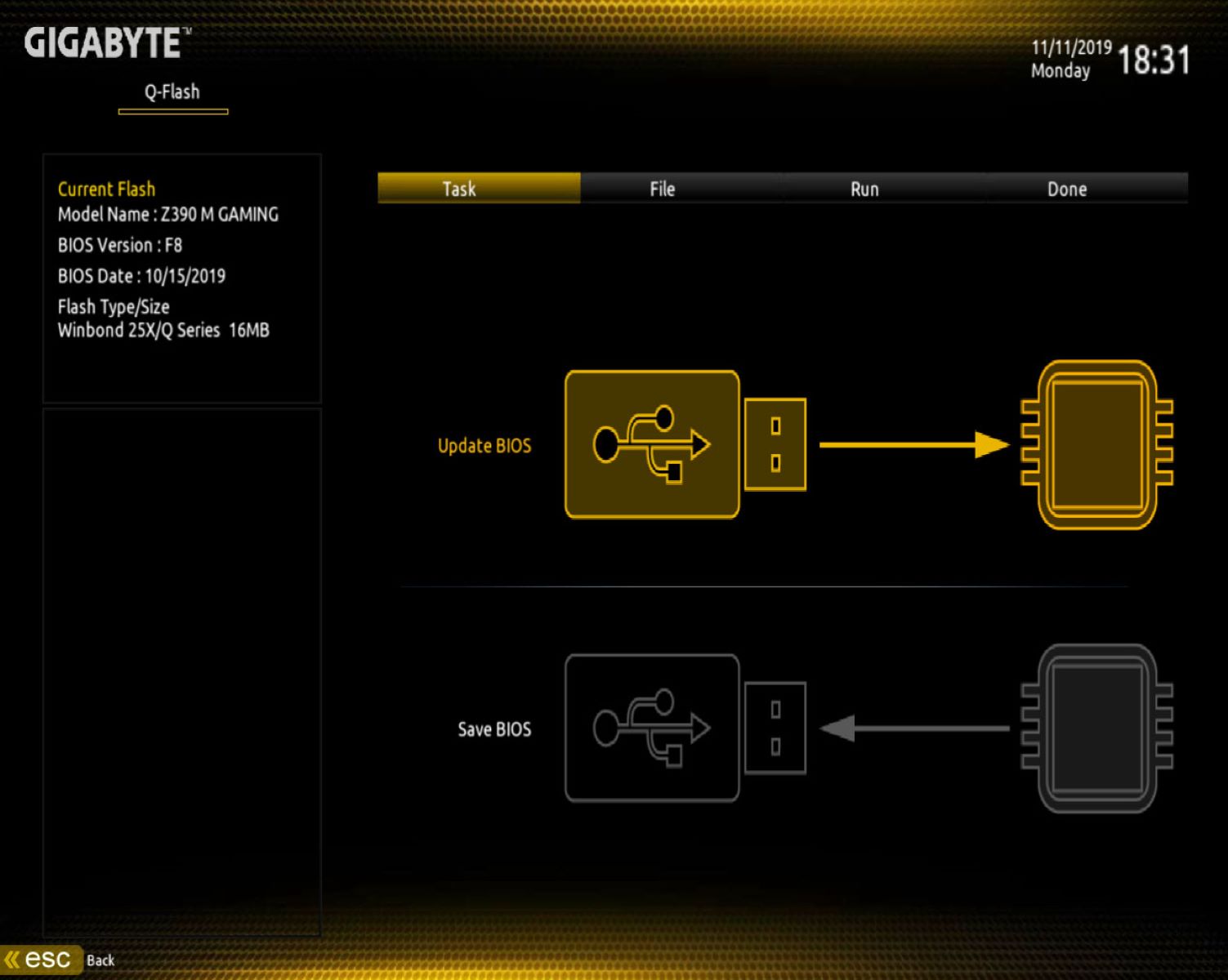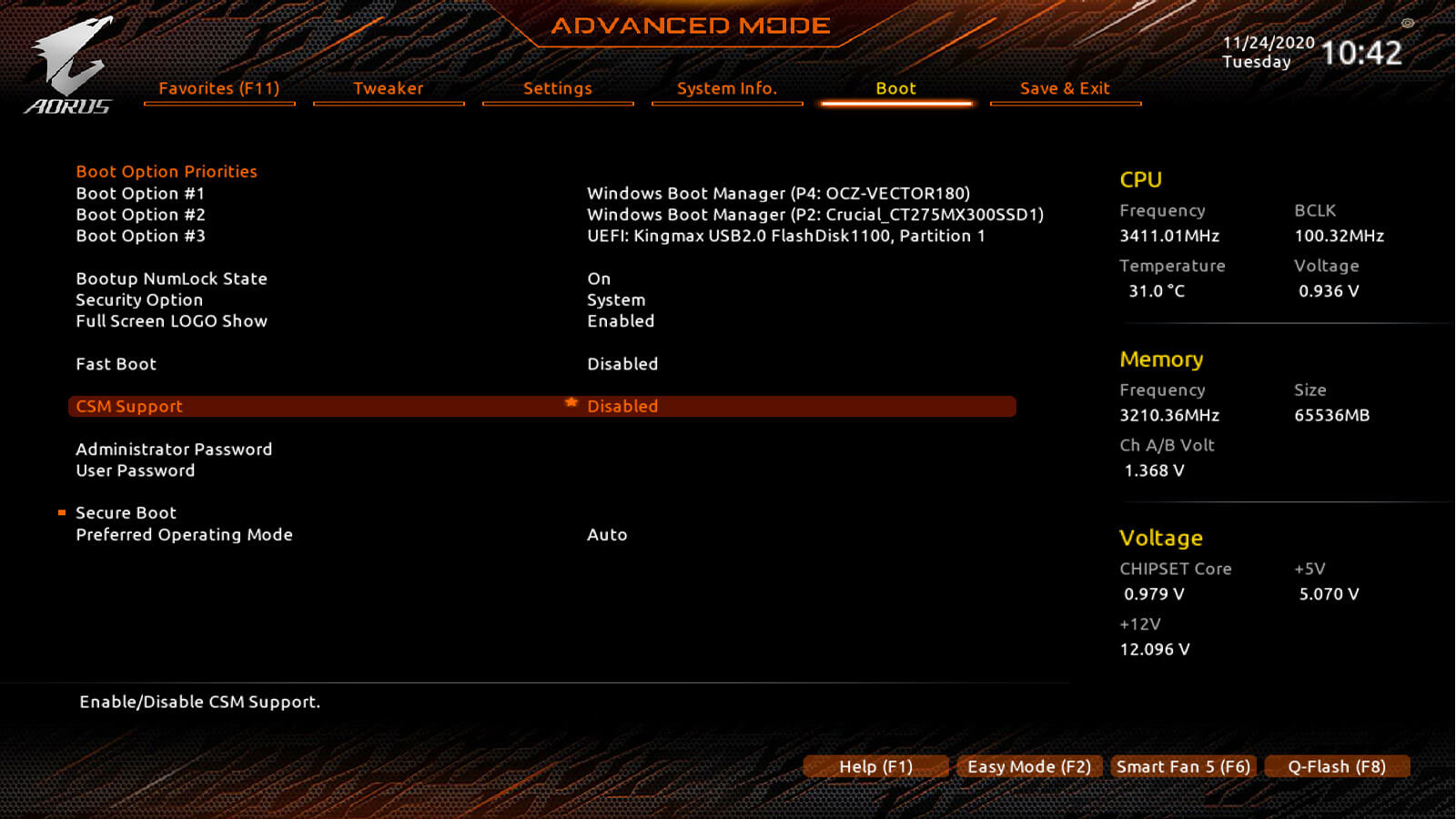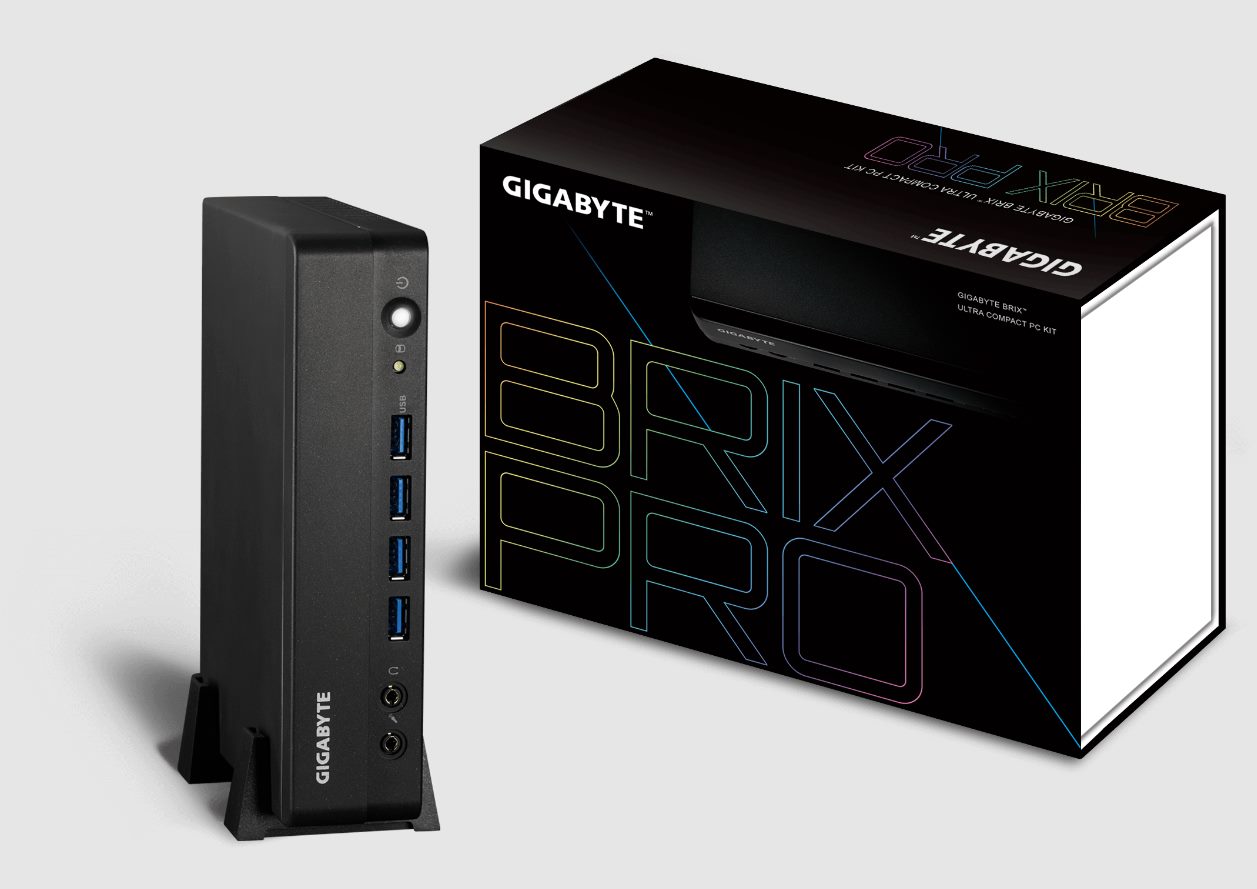Introduction
Welcome to this guide on how to enable Secure Boot on a Gigabyte motherboard. In today’s digital landscape, where cyber threats are becoming increasingly sophisticated, it’s essential to take every measure to protect your computer system from unauthorized access and malicious software. Secure Boot is a feature that adds an extra layer of security to your system by ensuring that only trusted bootloaders and operating systems are allowed to run during the startup process.
But what exactly is Secure Boot? How does it work, and why should you consider enabling it on your Gigabyte motherboard? In this article, we will answer these questions and provide a step-by-step guide on how to enable Secure Boot on your Gigabyte motherboard.
Secure Boot is a security feature that was introduced by Microsoft as part of the Unified Extensible Firmware Interface (UEFI) specification. It is designed to prevent unauthorized software from loading during the computer’s startup process, thereby protecting against the execution of malware and other malicious code.
By enabling Secure Boot, your motherboard will only allow bootloaders and operating systems with a valid digital signature to run. This ensures that any software or firmware that is loaded during startup comes from trusted sources and hasn’t been tampered with.
Now, you may be wondering why it is important to enable Secure Boot on your Gigabyte motherboard. The answer lies in the numerous benefits it provides:
- Protection against malware: Secure Boot verifies the digital signatures of bootloaders and operating systems, preventing the execution of malicious code that could potentially harm your computer.
- Protection against unauthorized access: Secure Boot helps safeguard against unauthorized access by ensuring that only trusted software components are allowed to run, reducing the risk of unauthorized modifications.
- Compliance with industry standards: Many organizations and institutions, particularly in industries such as finance and healthcare, require the use of Secure Boot as part of their security protocols.
- Peace of mind: Enabling Secure Boot provides peace of mind, knowing that your system is protected against potential security threats that could compromise your data or privacy.
Now that you understand the importance of Secure Boot, let’s move on to the next section to check if your Gigabyte motherboard supports this feature.
What is Secure Boot?
Secure Boot is a security feature that was introduced as part of the Unified Extensible Firmware Interface (UEFI) specification. It is designed to protect your computer system from unauthorized software and ensure that only trusted bootloaders and operating systems are allowed to run during the startup process.
When you turn on your computer, the Secure Boot feature verifies the digital signatures of the bootloaders and operating system. These digital signatures act as a form of cryptographic authentication, ensuring that the software is digitally signed by a trusted entity and hasn’t been tampered with.
The Secure Boot process starts with the firmware, typically implemented in the motherboard’s Basic Input/Output System (BIOS) or the newer UEFI firmware. The firmware contains a database of trusted public keys, known as the Secure Boot Key Database. Each public key corresponds to a trusted entity, such as Microsoft or the motherboard manufacturer.
During the startup process, the firmware checks the digital signature of the bootloader against the keys in the Secure Boot Key Database. If the digital signature matches one of the trusted keys, the bootloader is considered valid, and the firmware allows it to load. The bootloader, in turn, verifies the digital signature of the operating system before allowing it to run.
One of the key benefits of Secure Boot is that it prevents the execution of unauthorized or malicious software during startup. This protects against the loading of rootkits, bootkits, and other types of malware that can compromise the security and integrity of your system.
It’s important to note that Secure Boot is not a foolproof solution and doesn’t guarantee complete protection against all security threats. However, it offers an additional layer of security to mitigate the risk of unauthorized software execution and help ensure the integrity of the boot process.
In the next section, we will discuss how to check if your Gigabyte motherboard supports Secure Boot.
Why Enable Secure Boot?
Enabling Secure Boot on your Gigabyte motherboard provides several important benefits that help enhance the security and integrity of your computer system.
1. Protection against malware: By verifying the digital signatures of bootloaders and operating systems, Secure Boot ensures that only trusted and authorized software components are allowed to run during startup. This prevents the execution of malware, such as rootkits and bootkits, which can compromise your system’s security and privacy.
2. Prevention of unauthorized software: Secure Boot helps prevent the execution of unauthorized or modified software during the boot process. It ensures that only trusted software, signed with valid digital signatures, is allowed to run. This reduces the risk of unauthorized modifications to the bootloader or operating system, which can lead to system instability or security vulnerabilities.
3. Compliance and regulatory requirements: Many industries and organizations have strict security and compliance regulations. Enabling Secure Boot on your Gigabyte motherboard can help ensure compliance with these standards, especially in sectors such as finance, healthcare, and government.
4. Data and privacy protection: Secure Boot provides an additional layer of protection for your sensitive data and personal information. By preventing the execution of unauthorized software, it reduces the risk of data breaches and unauthorized access to your system.
5. Trustworthy system startup: Secure Boot ensures that your system starts up with trusted software components, providing a secure foundation for the rest of the operating system and applications. This helps create a trustworthy computing environment and reduces the risk of attacks that target the boot process.
Ultimately, enabling Secure Boot on your Gigabyte motherboard is a proactive step towards strengthening the security of your computer system. It helps protect against malware, unauthorized software, and potential security breaches, providing you with peace of mind and a more secure computing experience.
Now that you understand the importance of enabling Secure Boot, let’s move on to the next section to check if your Gigabyte motherboard supports this feature.
How to Check if Your Gigabyte Motherboard Supports Secure Boot
Before enabling Secure Boot on your Gigabyte motherboard, you need to ensure that it supports this feature. Here are the steps to check if your motherboard supports Secure Boot:
1. Access the BIOS/UEFI Setup: Start by restarting your computer and accessing the BIOS/UEFI setup. To enter the BIOS/UEFI setup, you will usually need to press a specific key during the startup process. The key may vary depending on your motherboard model, but common keys include F2, Delete, or F10. Refer to your motherboard’s manual or the startup screen for the exact key to press.
2. Navigate to the Boot Options: Once you are in the BIOS/UEFI setup, navigate to the “Boot” or “Boot Options” section. The location and terminology may slightly differ depending on your motherboard’s firmware, but it is typically found in the main menu or advanced settings.
3. Look for Secure Boot: In the Boot Options section, look for an option related to Secure Boot. It may be labeled “Secure Boot,” “UEFI Boot,” or something similar. Keep in mind that not all Gigabyte motherboards support Secure Boot, so don’t be alarmed if you can’t find this option.
4. Check the Secure Boot Status: If you find the Secure Boot option, check its status. It could be enabled, disabled, or set to “Windows UEFI Mode” or “Other OS.” If the option is already enabled, it means that your motherboard supports Secure Boot. If it is disabled or set to “Windows UEFI Mode” or “Other OS,” it indicates that your motherboard may not support Secure Boot.
5. Consult the Motherboard Manual or Manufacturer: If you can’t find the Secure Boot option or are unsure about your motherboard’s Secure Boot compatibility, refer to the motherboard’s manual or visit the manufacturer’s website for more information. The manual should provide detailed instructions on navigating the BIOS/UEFI setup and specific information about Secure Boot support.
By following these steps, you can determine whether your Gigabyte motherboard supports Secure Boot. If your motherboard does support Secure Boot, you can proceed to enable it, which we will discuss in the next section.
If your motherboard doesn’t support Secure Boot, don’t worry. There are other security measures you can take to protect your system, such as keeping your operating system and antivirus software up to date, using strong and unique passwords, and practicing safe browsing habits.
How to Enable Secure Boot on a Gigabyte Motherboard
If your Gigabyte motherboard supports Secure Boot, you can follow these steps to enable it:
Step 1: Accessing the BIOS/UEFI Setup: Start by restarting your computer and accessing the BIOS/UEFI setup. Press the specific key (such as F2, Delete, or F10) indicated during the startup process to enter the setup. Consult your motherboard manual or check the startup screen for the exact key to press.
Step 2: Navigating to the Secure Boot Option: Once you are in the BIOS/UEFI setup, navigate to the “Boot” or “Boot Options” section. Look for an option related to Secure Boot. The location and naming might vary depending on your motherboard’s firmware version. Refer to your motherboard manual to locate the exact location of the Secure Boot option.
Step 3: Enabling Secure Boot: If the Secure Boot option is currently disabled or set to “Windows UEFI Mode” or “Other OS,” change it to “Enabled” or an appropriate option that enables Secure Boot. Use the arrow keys on your keyboard to highlight the Secure Boot option and press Enter to access its settings. Select the appropriate enabled option and press Enter.
Step 4: Saving and Exiting the BIOS/UEFI Setup: After enabling Secure Boot, save your changes and exit the BIOS/UEFI setup. Look for the option to save the changes you made (usually labeled “Save and Exit” or “Exit Setup”) and press Enter. Confirm the save action if prompted.
Step 5: Verifying Secure Boot is Enabled: Once your computer restarts, pay attention to any messages or prompts that appear during startup. If Secure Boot is enabled successfully, you may see a notification or logo indicating secure boot is active. Additionally, you can re-enter the BIOS/UEFI setup and verify that the Secure Boot option is still enabled.
Note: Enabling Secure Boot may affect the compatibility of certain hardware components or operating systems. It is essential to ensure that all the necessary drivers and BIOS/UEFI updates are installed on your system. Consult the manufacturer’s documentation or support resources for any specific considerations related to your motherboard model.
By following these steps, you can enable Secure Boot on your Gigabyte motherboard, bolstering the security of your system during the boot process.
In the next section, we will discuss the importance of verifying that Secure Boot is enabled on your Gigabyte motherboard.
Step 1: Accessing the BIOS Setup
Before you can enable Secure Boot on your Gigabyte motherboard, you need to access the BIOS setup. The BIOS (Basic Input/Output System) is a firmware interface that allows you to configure various settings and options for your computer’s hardware.
Here’s how you can access the BIOS setup:
1. Restart your computer: Begin by restarting your computer. You can do this by clicking on the Start menu and selecting the Restart option, or by pressing the physical restart button on your computer.
2. Enter the BIOS setup key: As the computer restarts, keep an eye on the screen for a prompt that indicates which key to press in order to enter the BIOS setup. The key may vary depending on your motherboard manufacturer and model, but common keys include Del, F2, F10, or Esc. Consult your motherboard’s manual or look for the prompt on the screen to identify the correct key.
3. Press the BIOS setup key: Once you have identified the BIOS setup key, press it repeatedly as soon as the computer starts up. It’s important to press the key before the operating system starts loading, otherwise, you may need to restart the computer and try again.
4. Enter the BIOS setup: After pressing the BIOS setup key, you should enter the BIOS setup screen. The BIOS interface and layout may vary depending on your motherboard’s manufacturer and version. In some cases, the BIOS may be replaced by the newer UEFI (Unified Extensible Firmware Interface), which provides a more modern and graphical interface.
Once you have successfully entered the BIOS setup, you can proceed to the next steps to enable Secure Boot. It’s important to note that BIOS setup methods and keys may vary among different Gigabyte motherboard models. If you’re uncertain about the exact key or method for entering the BIOS setup, consult the motherboard’s manual or the manufacturer’s support website for specific instructions.
In the next section, we will discuss how to navigate to the Secure Boot option within the BIOS setup.
Step 2: Navigating to the Secure Boot Option
After successfully accessing the BIOS setup on your Gigabyte motherboard, you need to navigate to the Secure Boot option in order to enable it. The exact location and naming of the Secure Boot option may vary depending on your motherboard’s firmware version and layout, but the general steps outlined below will guide you through the process.
Here’s how you can navigate to the Secure Boot option:
1. Explore the BIOS setup menu: Once you are in the BIOS setup screen, you’ll see various menus or tabs containing different options and settings. Look for a tab or section that includes options related to boot settings or advanced settings. The name and location of this tab may differ depending on your motherboard’s firmware design.
2. Navigate to the Boot tab or section: Within the BIOS setup menu, locate the “Boot,” “Boot Options,” or a similar tab or section. This is where you can find settings related to the boot process and boot devices.
3. Search for Secure Boot: Within the Boot tab or section, search for an option or submenu related to Secure Boot. The naming may vary, but common terms include “Secure Boot,” “UEFI Boot,” or “Boot Mode.”
4. Access the Secure Boot option: Once you find the Secure Boot option, select it and press Enter to access its settings. This will allow you to enable or disable Secure Boot and configure any additional options associated with it.
5. Note Secure Boot settings: Take note of the current setting for Secure Boot. Depending on the firmware, it may be enabled, disabled, or set to a specific mode (such as “Windows UEFI Mode” or “Other OS Mode”). This information will be useful when enabling Secure Boot in the next steps.
It’s important to remember that the steps outlined above are a general guide, and the exact method of navigating to the Secure Boot option may differ depending on your Gigabyte motherboard model and firmware version. If you have trouble finding the Secure Boot option, refer to the motherboard’s manual or the manufacturer’s support website for specific instructions.
In the next section, we will discuss how to enable Secure Boot on your Gigabyte motherboard.
Step 3: Enabling Secure Boot
Once you have successfully located the Secure Boot option in the BIOS setup of your Gigabyte motherboard, you can proceed with enabling it to add an additional layer of security to your system. The exact steps may vary slightly depending on your motherboard’s firmware version, but the general process remains the same.
Here’s how you can enable Secure Boot on your Gigabyte motherboard:
1. Select the Secure Boot option: Use the arrow keys on your keyboard to highlight the Secure Boot option within the BIOS setup menu. Press Enter to access the Secure Boot settings.
2. Enable Secure Boot: Once you are in the Secure Boot settings, you will find an option to enable or disable Secure Boot. Use the arrow keys to highlight the option and select the enabled setting. This action will allow Secure Boot to take effect during the system boot process.
3. Configure additional options: Depending on your motherboard’s firmware, you may have additional options related to Secure Boot, such as key management or custom policies. Explore these options for any additional settings you may wish to configure, such as managing your own set of trusted keys.
4. Save and exit the BIOS setup: After enabling Secure Boot and configuring any additional options, save your changes and exit the BIOS setup menu. Look for the option to save the changes you made (often labeled “Save and Exit” or “Exit Setup”) and confirm the save action if prompted.
Once you have completed these steps, Secure Boot will be enabled on your Gigabyte motherboard. This means that during the boot process, only bootloaders and operating systems with valid digital signatures will be allowed to run, providing an added layer of security against unauthorized software execution.
Remember to consult your motherboard’s manual or the manufacturer’s support website for any specific considerations or variations related to your Gigabyte motherboard model.
In the next section, we will learn how to verify that Secure Boot is enabled on your Gigabyte motherboard.
Step 4: Saving and Exiting the BIOS Setup
After enabling Secure Boot on your Gigabyte motherboard, it’s important to save your changes and exit the BIOS setup for the new settings to take effect. This step ensures that Secure Boot is properly enabled and ready to enhance the security of your system during the boot process.
Here’s how you can save and exit the BIOS setup:
1. Confirm the changes: Before proceeding, double-check that Secure Boot is enabled in the Secure Boot settings. Ensure that all other desired changes or configurations have been made as well.
2. Save the changes: Look for the option to save the changes you made in the BIOS setup. This can typically be found under a menu labeled “Save and Exit,” “Exit Setup,” or a similar name. Press Enter or the designated key to save the changes.
3. Confirm the save action: The BIOS setup may prompt you to confirm the save action. You can usually confirm by selecting “Yes” or pressing Y on your keyboard. This action will save your changes and apply them to the system’s configuration.
4. Exit the BIOS setup: Once the changes are saved, look for the option to exit the BIOS setup screen. This can be labeled as “Exit without Saving” or “Save and Exit.” Select the appropriate option to exit the BIOS setup.
Your computer will then proceed to boot with the new settings, including the enabled Secure Boot. It’s important to note that improper actions during the save and exit process may result in the changes not being applied. Make sure to carefully follow the prompts and confirmations to ensure a successful save and exit process.
Now that you have successfully saved and exited the BIOS setup, your Gigabyte motherboard is configured with enabled Secure Boot. This enhanced security feature will help protect your system by verifying the digital signatures of bootloaders and operating systems during the boot process.
In the next section, we will discuss how to verify if Secure Boot is indeed enabled on your Gigabyte motherboard.
Step 5: Verifying Secure Boot is Enabled
After enabling Secure Boot on your Gigabyte motherboard and saving the changes in the BIOS setup, it’s important to verify that Secure Boot is indeed enabled and functioning as intended. This verification step ensures that your system is protected by allowing only trusted bootloaders and operating systems to run during the startup process.
Here’s how you can verify if Secure Boot is enabled on your Gigabyte motherboard:
1. Pay attention to startup messages: Restart your computer and pay close attention to any messages or prompts that appear during the startup process. Some motherboards may display a logo or notification indicating that Secure Boot is enabled. This gives you an immediate indication that Secure Boot is functioning as intended.
2. Re-enter the BIOS setup: Another way to verify Secure Boot is by re-entering the BIOS setup and checking the Secure Boot settings. Restart your computer and follow the steps to access the BIOS setup again. Once inside the setup, navigate to the Secure Boot option and confirm that it is still enabled.
3. Ensure valid operating system behavior: With Secure Boot enabled, your system will only allow the execution of bootloaders and operating systems with valid digital signatures. Therefore, one way to verify Secure Boot is by observing the behavior of your operating system. If you notice any warnings or errors during the boot process indicating the failure to load an untrusted operating system, this confirms that Secure Boot is enabled and working as intended.
4. Consult your operating system documentation: Depending on the operating system you are using, there may be specific means to verify if Secure Boot is enabled. Consult the documentation or support resources for your operating system to learn more about verifying Secure Boot status within the operating system itself.
By following these verification steps, you can ensure that Secure Boot is successfully enabled on your Gigabyte motherboard. This confirmation provides peace of mind and reassurance that your system benefits from the enhanced security and protection provided by Secure Boot.
Remember to refer to your motherboard’s manual or the manufacturer’s support website for any specific guidelines related to Secure Boot verification or any considerations specific to your Gigabyte motherboard model.
In the next section, we will conclude this guide on enabling Secure Boot on a Gigabyte motherboard and summarize the key points discussed.
Conclusion
Enabling Secure Boot on your Gigabyte motherboard is a crucial step towards enhancing the security and integrity of your computer system. By allowing only trusted bootloaders and operating systems to run during the startup process, Secure Boot protects against unauthorized software execution and helps safeguard your system against malware and unauthorized modifications.
In this guide, we discussed the importance of Secure Boot and its benefits, including protection against malware, prevention of unauthorized software, compliance with industry standards, and enhanced data privacy. We then provided step-by-step instructions on how to check if your Gigabyte motherboard supports Secure Boot and how to enable it if it is supported.
We covered the process of accessing the BIOS setup, navigating to the Secure Boot option, enabling Secure Boot, and saving and exiting the BIOS setup. We also emphasized the importance of verifying whether Secure Boot is indeed enabled on your Gigabyte motherboard through startup messages, checking the Secure Boot settings in the BIOS setup, observing valid operating system behavior, and consulting your operating system documentation.
Remember, Secure Boot is just one layer of security, and it’s essential to implement other security measures, such as keeping your operating system and antivirus software updated, using strong passwords, and practicing safe browsing habits.
We hope that this guide has provided you with the knowledge and confidence to enable Secure Boot on your Gigabyte motherboard and strengthen the security of your computer system. By taking proactive steps to protect your system, you can enjoy a safer and more secure computing experience.







